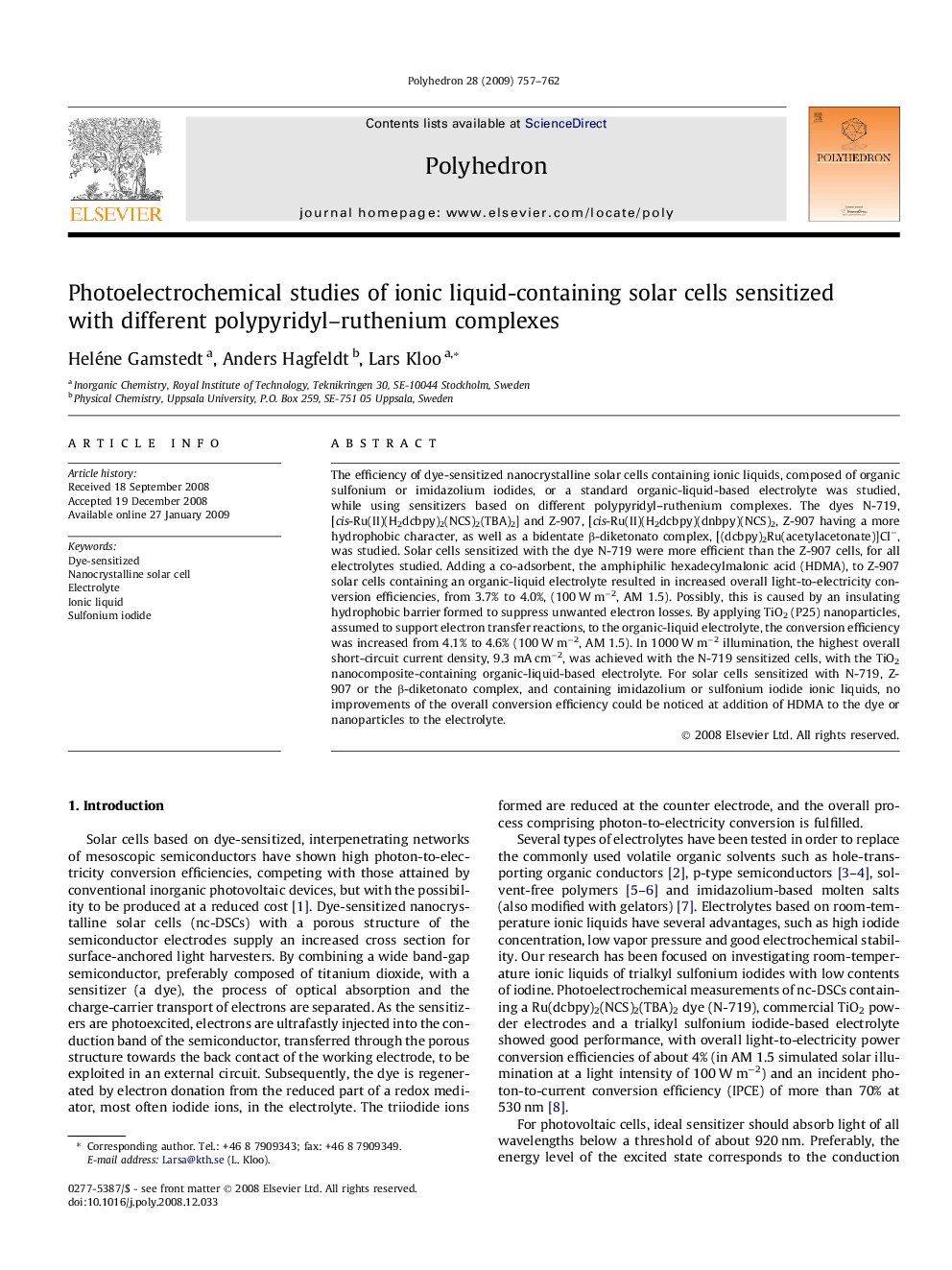| Article ID | Journal | Published Year | Pages | File Type |
|---|---|---|---|---|
| 1335046 | Polyhedron | 2009 | 6 Pages |
The efficiency of dye-sensitized nanocrystalline solar cells containing ionic liquids, composed of organic sulfonium or imidazolium iodides, or a standard organic-liquid-based electrolyte was studied, while using sensitizers based on different polypyridyl–ruthenium complexes. The dyes N-719, [cis-Ru(II)(H2dcbpy)2(NCS)2(TBA)2] and Z-907, [cis-Ru(II)(H2dcbpy)(dnbpy)(NCS)2, Z-907 having a more hydrophobic character, as well as a bidentate β-diketonato complex, [(dcbpy)2Ru(acetylacetonate)]Cl−, was studied. Solar cells sensitized with the dye N-719 were more efficient than the Z-907 cells, for all electrolytes studied. Adding a co-adsorbent, the amphiphilic hexadecylmalonic acid (HDMA), to Z-907 solar cells containing an organic-liquid electrolyte resulted in increased overall light-to-electricity conversion efficiencies, from 3.7% to 4.0%, (100 W m−2, AM 1.5). Possibly, this is caused by an insulating hydrophobic barrier formed to suppress unwanted electron losses. By applying TiO2 (P25) nanoparticles, assumed to support electron transfer reactions, to the organic-liquid electrolyte, the conversion efficiency was increased from 4.1% to 4.6% (100 W m−2, AM 1.5). In 1000 W m−2 illumination, the highest overall short-circuit current density, 9.3 mA cm−2, was achieved with the N-719 sensitized cells, with the TiO2 nanocomposite-containing organic-liquid-based electrolyte. For solar cells sensitized with N-719, Z-907 or the β-diketonato complex, and containing imidazolium or sulfonium iodide ionic liquids, no improvements of the overall conversion efficiency could be noticed at addition of HDMA to the dye or nanoparticles to the electrolyte.
Graphical abstractThe efficiency of a selection of ionic liquid electrolytes combined with standard, hydrophobic and cationic organometallic sensitizing dyes have been investigated as components in dye-sensitized solar cells. Also effects of co-adsorbent and nanoparticle additives to the electrolytes have been investigated.Figure optionsDownload full-size imageDownload as PowerPoint slide
